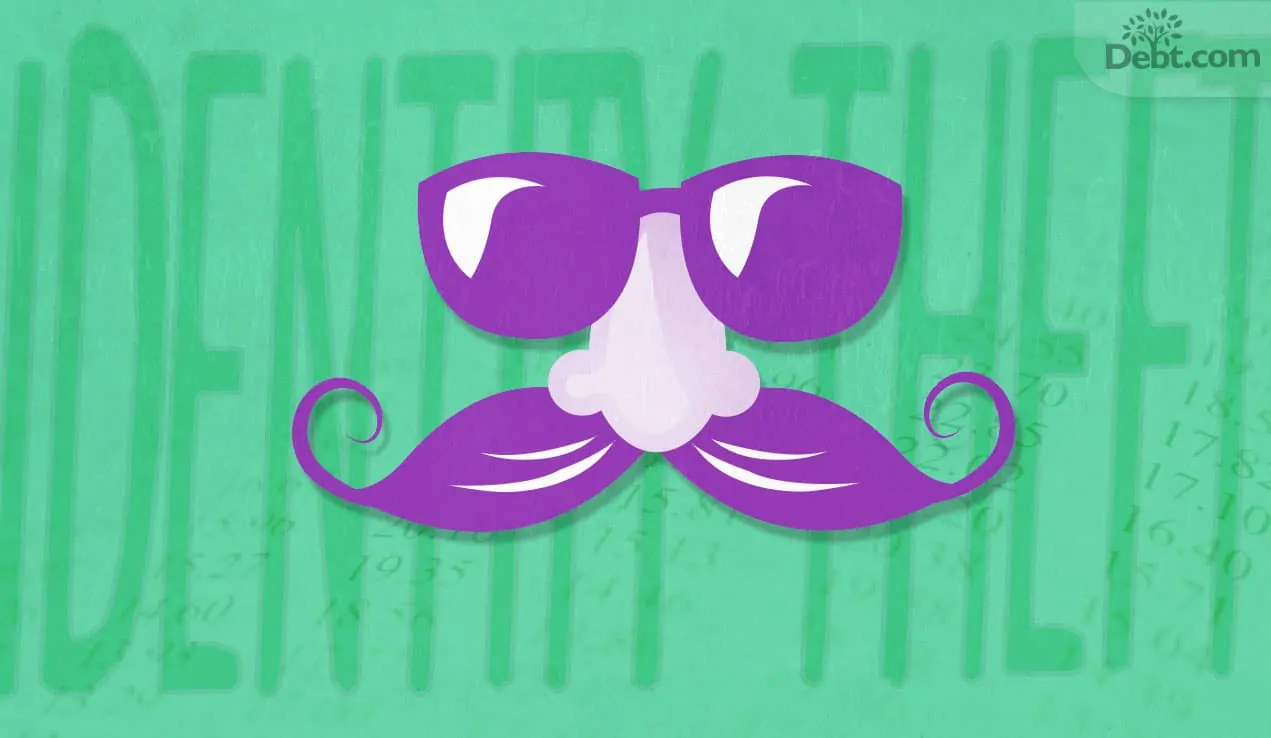Few things send a chill up your spine like the thought of someone stealing your identity to open new credit accounts under your name, make unauthorized purchases or fraudulently obtain health care benefits or services. Yet identity thieves are always lurking, ready to use your good credit to benefit themselves.
In 2020, the Federal Trade Commission (FTC) received nearly 1.4 million reports of identity theft, twice as many as in 2019. Of those reports, more than 406,000 were from people who said someone else used their personal information to apply for a government document or government benefits, according to the FTC.
How to Report Identity Theft
There are many different types of identity theft to worry about. Whether it’s your Social Security number or your medical records, criminals are always trying to get to your personal information. Protecting your identity is your first priority. But when identity theft strikes, you need to act quickly to prevent further damage. The less you have to fight over money and deal with paperwork, the better. This guide will help you know where to report identity theft if you become a victim.
Step 1: Submit an identity theft complaint to the Federal Trade Commission.
The FTC’s identity theft portal, IdentityTheft.gov is where you explain what happened, create a recovery plan, and access letters and forms you will need to send to your creditors. The FTC identity theft report will generate something called an identity theft affidavit, which you use to file a police report with local law enforcement.
Having both of these documents makes it much easier to stop and reverse the damage from identity theft. They’ll enable you to get a 7-year fraud alert on your credit file (initial fraud alerts only last 90 days, but are renewable) and with that two free credit reports from each CRA per year. Normally you only get one per year; these two reports are on top of that.
TIP: You’ll also have an easier time removing fraudulent information from your credit reports and stopping companies from trying to collect fraud-based debts when you complete this step.
Estimated Time: 1-2 hours to submit information for the report
Step 2: Report your case of identity theft to the police.
If you know who the thief is, an affected company wants you to file an official police report, or the thief has used your personal information in interactions with law enforcement, you will need to file a police report. This means taking a trip to your local police station with the right paperwork in hand. You will need:
- A government photo ID, such as a Driver’s License
- Proof of address
- Your FTC Identity Theft Report
- All other proof that could help the investigation
TIP: Ask for a copy of the police report for your own records. Then review how to prevent identity theft to avoid new issues in the future.
Estimated Time: 2 hours to report identity theft to the police
Step 3: Contact the account to report the fraudulent activity
Once you know the accounts were fraudulently opened under your name, contact the companies where the fraud occurred. Explain that your identity was stolen and ask them to close or freeze the accounts. That way, no one else can add charges without your permission.
This can mean calling your bank, your credit card company, or any other account host that could have compromised information. Medical identity theft requires calling hospitals and your insurance company, and social media identity theft means reporting to the site itself. They’ll suggest steps to secure your account, including canceling and replacing your card. Acting quickly also limits your liability for charges you didn’t make.
If your Social Security number has been compromised, contact the SSA’s Office of the Inspector General. Report identity theft to social security and follow their guidance to protect your benefits and prevent further misuse of your Social Security number.
Ask the company to send a letter confirming that the fraudulent account is not yours, you’re not liable for it and the account was removed from your credit report. Then save the letter you receive. You may need it later if the account is still on your credit report.
TIP: Have the fraudulent information ready. For example, if you are reporting fraud to your bank, pull up information about the fraudulent purchase(s) on your computer so you don’t have to search for the information during the call.
Estimated Time: 1 hour, plus time to follow the company’s directions
Step 4: Place an initial fraud alert on your credit reports.
Report identity theft to credit bureaus so they set up a fraud alert and start removing the fraudulent charges.
Fraud alerts make it more difficult for credit to be opened in your name. Go to the website of any of the three big credit reporting agencies — Equifax,Experian, or TransUnion — and request one. It’s free, and the information will be shared between all three.
A fraud alert won’t necessarily prevent someone from using the accounts you already have, however.
| Online | By calling | By mail |
|---|---|---|
| Equifax Alerts | (800) 685-1111 | Equifax Consumer Fraud Division, PO Box 740256, Atlanta, GA 30374 |
| Experian Fraud Center | (888) 397-3742 | Experian, P.O. Box 9554, Allen, TX 75013 |
| Transunion Fraud Alert | (888) 909-8872 | TransUnion Fraud Victim Assistance Department, P.O. Box 2000, Chester, PA 19016 |
TIP: Do this as soon as you know you are a victim. The sooner, the better, and the safer your money and information will be.
Estimated Time: 30 minutes
Take These Steps to Recover from Identity Theft
The road to recovering from identity theft is no fun, filled with contacting creditors, closing accounts, and reporting fraudulent activity to the proper authorities. Still, it’s crucial that you take the proper steps to protect your credit and repair any damage.
Maintain a record and follow up
Keep a detailed record of all communications, including dates, names, and reference numbers. Follow up with the relevant authorities, financial institutions, and credit reporting agencies to ensure that the necessary actions are being taken to resolve the identity theft.
Review your credit report
One of the first steps to recovering from identity theft is ordering and reviewing a copy of your credit report. There may be other breaches you are not aware of. You can order one free copy of your credit report a year at AnnualCreditReport.com. You can also get a free copy by signing up for a service such as Credit Karma, which allows access to your credit scores and credit report anytime.
When reviewing your credit report, review it closely for unfamiliar credit cards, loans, or other credit accounts that you didn’t open so you can get to work on your identity theft recovery.
Correct your credit report
When someone steals your identity, you have the right to remove or “block” fraudulent information so it doesn’t show up on your credit report, according to the FTC. Once you do this, companies aren’t allowed to try to collect fraudulent debts.
You will need a copy of your FTC identity theft report to ensure that a major credit bureau honors your request. Contact the credit bureau with incorrect information, which may be all three – Experian, TransUnion or Equifax – to remove information for fraudulently opened accounts.
Monitor your credit report
Once you’ve taken the tedious but necessary steps to recover from identity theft, make sure you review your credit report regularly, at least every six months. That way, if more fraudulent charges or accounts show up on your credit report, you can nip the identity theft in the bud.
Get professional help to clean up errors in your credit report.
Avoid Identity Theft Again
In just the last two decades, how we pay for goods and services has dramatically changed. Before the days of online shopping, we paid with cash, checks, and credit and debit cards. While there was some payment fraud with checks and plastic payment options, it wasn’t as rampant as it is today.
The online mobile environment makes it easier for people to pay and get paid for their products and services. Yet for identity thieves, the same environment creates a vast opportunity to steal more. They’ve proven it time and again with large-scale breaches of trusted large companies and organizations such as Target, Experian, and Home Depot. Additionally, identity thieves are targeting medical and tax portals as more organizations digitize their records and transactions.
When you can’t count on large companies and organizations to secure your personal information, you need to understand potential identity theft pitfalls and learn how to avoid them.
Weak password protection
This is one of the biggest mistakes individuals make out of fear they will forget their passwords. Sometimes, weak passwords arise out of complacency— “It won’t happen to me” or “My password isn’t my birthday, so it’s enough.” Identity thieves can easily take advantage of vulnerabilities such as passwords based on names and birthdays, or which are identical to passwords used on other sites.
Solution: To avoid this pitfall, use a password management tool to store all your passwords. Use it to generate randomized passwords every few months that consist of a combination of upper- and lowercase letters, symbols, and numbers.
Lack of personal document protection
Individuals have become so reliant on digital transaction processes that they may forget about the physical documentation that identity thieves can also use. This includes documents like passports, birth certificates, and Social Security cards, as well as credit and debit cards. Thieves can steal these personal documents from homes, offices, vehicles, handbags, and garbage cans.
Solution: Keep all documents containing sensitive personal data in a safe or safety deposit box. Don’t leave anything valuable in your vehicle. Lastly, ensure your handbag or wallet is in your possession or otherwise secured. You may even want to consider an RFID wallet that protects credit and debit cards from certain devices hackers may employ to gain access to encrypted information.
Lack of review and awareness
Another pitfall is the lack of awareness and the failure to keep track of vulnerabilities and data breaches. It’s easy to become so busy that there’s no time to stay on top of every breach, scam or threat, let alone periodically check all your bank and charge accounts. Yet failing to pay attention can turn you into an easy if unwitting target.
Solution: To prevent this from happening, consider subscribing to an identity theft protection service. These services track your accounts and credit reports for any signs of potential identity theft. Additionally, find out which of your financial services providers offer their own apps and security alerts, and sign up for them. Lastly, be sure to monitor your credit by getting a copy of your credit report from three main agencies every year.
No backup plan
Should there be a security breach or unauthorized access to documentation, it’s important to address it quickly. Unfortunately, time is of the essence in identity theft, and a failure to stop it promptly can compound the damage. Time counts in these situations as ID thieves go to work to see how much money they can steal or how many fraudulent purchases they can make before an account is closed or blocked.
Solution: To stop identity theft as soon as you suspect something is wrong, be sure to have copies of credit, debit, and ID cards as well as other personal documents. Along with the copies, keep the phone numbers of each organization linked to those cards and documents, so you can report the theft or loss.
Too many accounts and lists
With every website or app, there is a sign-up form. Once you start submitting those forms, your identifying information is out there. It may even potentially be sold to other lists and companies. Being on these lists for things like pre-approved credit cards can make you a target for mail and email thieves. If a thief gets hold of one of those offers, they can easily redeem it for an actual credit card and enjoy a shopping spree on your dime.
Solution: To reduce the risk of this ID threat, unsubscribe from as many online accounts as possible. Look for contact information to make sure your name is no longer included on lists that are sold to other companies. Finally, if you have a number of credit card accounts open that you are not using, close them. You are most likely not tracking them, plus you’ll no longer have to account for that card in your wallet or at home.
Reporting identity theft promptly is crucial to mitigating its impact on your life. By following the steps outlined in this guide, you can effectively report the incident, protect your identity, and work towards restoring your financial security. Remember to remain vigilant in monitoring your accounts, regularly review your credit reports, and take proactive measures to prevent future instances of identity theft. Stay informed, act swiftly, and safeguard your identity from potential harm.






